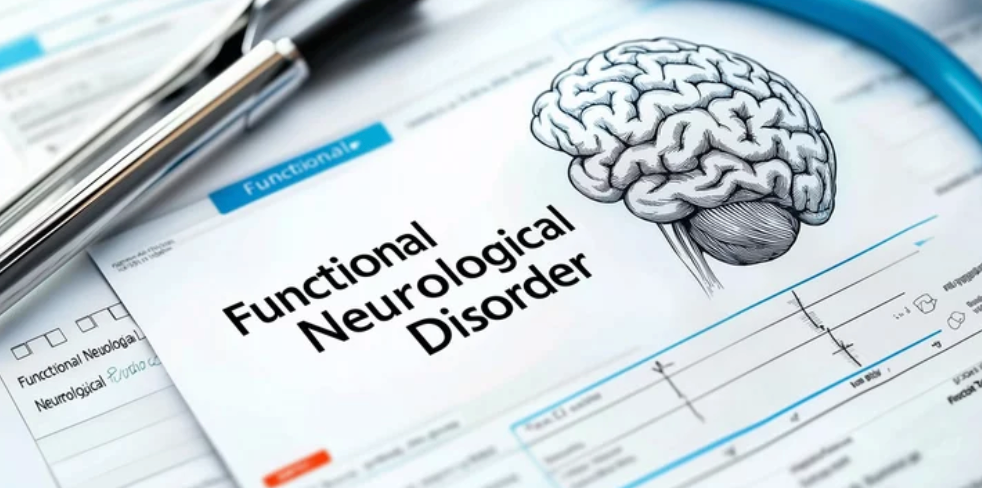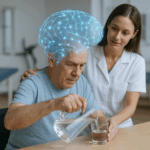Functional Neurological Disorders (FND) is a complex and often misunderstood condition characterized by neurological symptoms that lack a structural or pathological explanation. These symptoms can mimic those seen in organic neurological diseases such as stroke, multiple sclerosis, and epilepsy, yet they arise from dysfunction in neural networks rather than anatomical damage. The evolving understanding of FND has led to a shift from viewing it as a purely psychogenic disorder to recognizing it as a disorder of disrupted brain connectivity and functional network abnormalities.
Rehabilitation plays a crucial role in the management of FND, integrating physiotherapy, psychological interventions, and neuromodulation to restore function and improve patient outcomes. This article provides an in-depth exploration of the epidemiology, pathophysiology, clinical manifestations, diagnostic criteria, and evidence-based rehabilitation approaches for FND, with a focus on multidisciplinary management strategies.
1. Understanding Functional Neurological Disorders (FND)
1.1 Definition and Terminology
FND refers to a group of disorders characterized by neurological symptoms that are inconsistent with known organic diseases. Historically, these disorders were labeled as “conversion disorder” under the psychoanalytic framework, suggesting an underlying psychological conflict manifesting as physical symptoms. However, contemporary research supports a neurobiological basis, highlighting dysfunctional brain networks involved in sensorimotor control, perception, and emotional regulation (Stone et al., 2021).
The term “functional” indicates a disturbance in nervous system function without identifiable structural damage. This distinction differentiates FND from other neurological disorders such as Parkinson’s disease, stroke, or multiple sclerosis, which have well-defined pathological markers.
1.2 Epidemiology and Risk Factors of Functional Neurological Disorders
FND is a common but underdiagnosed condition with significant implications for neurological and psychiatric healthcare. Epidemiological data indicate that:
-
- The annual incidence of FND ranges between 4 and 12 cases per 100,000 individuals (Perez et al., 2020).
-
- FND accounts for 5–10% of outpatient neurology referrals and 15–20% of hospital admissions for neurological symptoms (Stone et al., 2021).
-
- The disorder predominantly affects women, with a female-to-male ratio of 2:1 (Espay et al., 2018).
-
- Onset typically occurs between adolescence and middle adulthood, but cases have been reported in children and the elderly (Williams et al., 2021).
-
- Certain factors increase susceptibility to FND, including:
-
- Psychological stress, trauma, or adverse life events.
-
- Coexisting psychiatric disorders (e.g., depression, anxiety, PTSD).
-
- Chronic pain syndromes (e.g., fibromyalgia, irritable bowel syndrome).
-
- History of organic neurological illness (e.g., epilepsy, stroke, traumatic brain injury).
-
- Certain factors increase susceptibility to FND, including:
2. Pathophysiology and Mechanisms of FND
Unlike structural neurological disorders, FND is primarily a disorder of functional connectivity and neural network dysfunction rather than anatomical damage. Advances in neuroimaging have significantly enhanced the understanding of FND pathophysiology.
2.1 Disruption of Brain Networks
Functional MRI (fMRI), positron emission tomography (PET), and transcranial magnetic stimulation (TMS) studies indicate that FND symptoms result from:
Dysregulated Sensorimotor Control
-
- The supplementary motor area (SMA), involved in planning voluntary movements, exhibits abnormal activity in FND, leading to impaired motor initiation (Czarnecki et al., 2020).
-
- Dysfunction in the corticospinal tract and inhibitory circuits contributes to movement disorders like functional tremors and limb weakness.
Limbic System Hyperactivity and Emotional Processing Dysregulation
-
- Increased activity in the amygdala and anterior cingulate cortex correlates with heightened emotional responses to stress and trauma, potentially triggering symptoms (Baizabal-Carvallo et al., 2019).
-
- Many patients report symptom onset following acute stress, supporting the link between emotional processing and FND pathophysiology.
Abnormal Interoception and Symptom Perception
-
- Dysfunction in the insula-prefrontal cortex connectivity may result in heightened self-focus on physical sensations, amplifying symptoms.
-
- This mechanism explains the fluctuating nature of FND symptoms, which are influenced by attention, distraction, and psychological factors (Reuber et al., 2020).
3. Clinical Presentation and Diagnosis
3.1 Common Clinical Manifestations
FND symptoms can resemble those of organic neurological diseases, making accurate diagnosis essential. The primary symptom categories include:
(a) Motor Symptoms
-
- Functional Weakness and Paralysis – Sudden limb weakness that does not follow known neurological patterns.
-
- Functional Tremors – Rhythmic movements that vary with distraction.
-
- Functional Dystonia – Abnormal limb posturing resistant to voluntary correction.
-
- Gait Disturbances – Unusual walking patterns, including sudden knee buckling.
(b) Sensory Symptoms
-
- Non-dermatomal Sensory Loss – Sensory deficits inconsistent with nerve distributions.
-
- Functional Visual Disturbances – Unexplained vision loss or tunnel vision with normal ophthalmologic findings.
(c) Psychogenic Non-Epileptic Seizures (PNES)
-
- Episodes mimicking epileptic seizures but lacking EEG abnormalities.
-
- No postictal confusion or delayed recovery.
3.2 Diagnostic Approach
FND is a positive clinical diagnosis based on characteristic features rather than exclusion of organic pathology. Key clinical signs include:
-
- Hoover’s Sign – Functional limb weakness is detected through involuntary activation of the contralateral limb.
-
- Tremor Entrainment Test – Functional tremors change frequency when the patient attempts another rhythmic movement.
-
- Distraction Test – Symptoms often improve or disappear with distraction.
4. Rehabilitation Approaches in FND
4.1 Multidisciplinary Rehabilitation
Effective rehabilitation requires a team-based approach involving:
-
- Neurology and Psychiatry – Diagnosis confirmation and psychiatric comorbidity management.
-
- Physiotherapy – Motor retraining through task-specific exercises.
-
- Psychological Therapy – Addressing maladaptive illness beliefs and emotional dysregulation.
4.2 Physiotherapy for Functional Motor Disorders
Physiotherapy plays a pivotal role in restoring movement patterns. Key principles include:
-
- Automatic Movement Facilitation – Encouraging non-conscious movement using external cues (e.g., walking to a rhythm).
-
- Mirror Therapy and Virtual Reality (VR) – Enhancing motor relearning.
-
- Task-Specific Exercises – Emphasizing functional activities rather than strength training.
4.3 Cognitive-Behavioral Therapy (CBT) and Psychological Interventions
CBT has shown efficacy in modifying negative illness beliefs, reducing fear avoidance, and improving symptom control (Goldstein et al., 2022). Other beneficial approaches include:
-
- Acceptance and Commitment Therapy (ACT) – Improving psychological flexibility.
-
- Trauma-Focused Therapy – Addressing unresolved emotional conflicts.
4.4 Neuromodulation Therapies
Emerging neuromodulation techniques show promise for FND rehabilitation:
-
- Transcranial Magnetic Stimulation (TMS) – Reactivating disrupted neural circuits.
-
- Transcranial Direct Current Stimulation (tDCS) – Modulating cortical excitability.
5. Prognosis and Future Directions
5.1 Prognostic Factors
-
- Early diagnosis and intervention improve outcomes.
-
- Engagement in structured therapy is associated with higher recovery rates.
-
- Coexisting psychiatric conditions may complicate rehabilitation.
5.2 Future Research Directions
-
- AI-assisted diagnosis for improved clinical accuracy.
-
- Personalized rehabilitation programs based on neuroimaging biomarkers.
-
- Novel neuromodulatory treatments for enhanced neural plasticity.
Conclusion
FND is a neurological disorder of functional brain connectivity rather than a purely psychiatric condition. With multidisciplinary, evidence-based rehabilitation, patients can achieve significant functional recovery and improved quality of life. Advancements in physiotherapy, psychological therapy, and neuromodulation continue to enhance FND treatment paradigms, reinforcing the importance of early diagnosis and personalized rehabilitation approaches.
References
(1) Stone J, et al. J Neurol Neurosurg Psychiatry. 2010;81(3):304-308.
(2) Carson A, et al. Lancet Neurol. 2016;15(10):925-936.
(3) Hallett M. Nat Rev Neurol. 2016;12(2):59-68.
(4) Voon V, et al. Brain. 2010;133(5):1526-1536.
(5) Aybek S, et al. Brain. 2014;137(6):1527-1538.
(6) Czarnecki K, et al. Mov Disord. 2008;23(6):745-749.
(7) Nielsen G, et al. J Neurol Neurosurg Psychiatry. 2015;86(10):1032-1039.
(8) Pick S, et al. J Psychosom Res. 2020;137:110220.
(9) Edwards MJ, et al. Brain. 2011;134(7):2057-2066.
(10) Perez DL, et al. Lancet Psychiatry. 2021;8(6):536-547.






